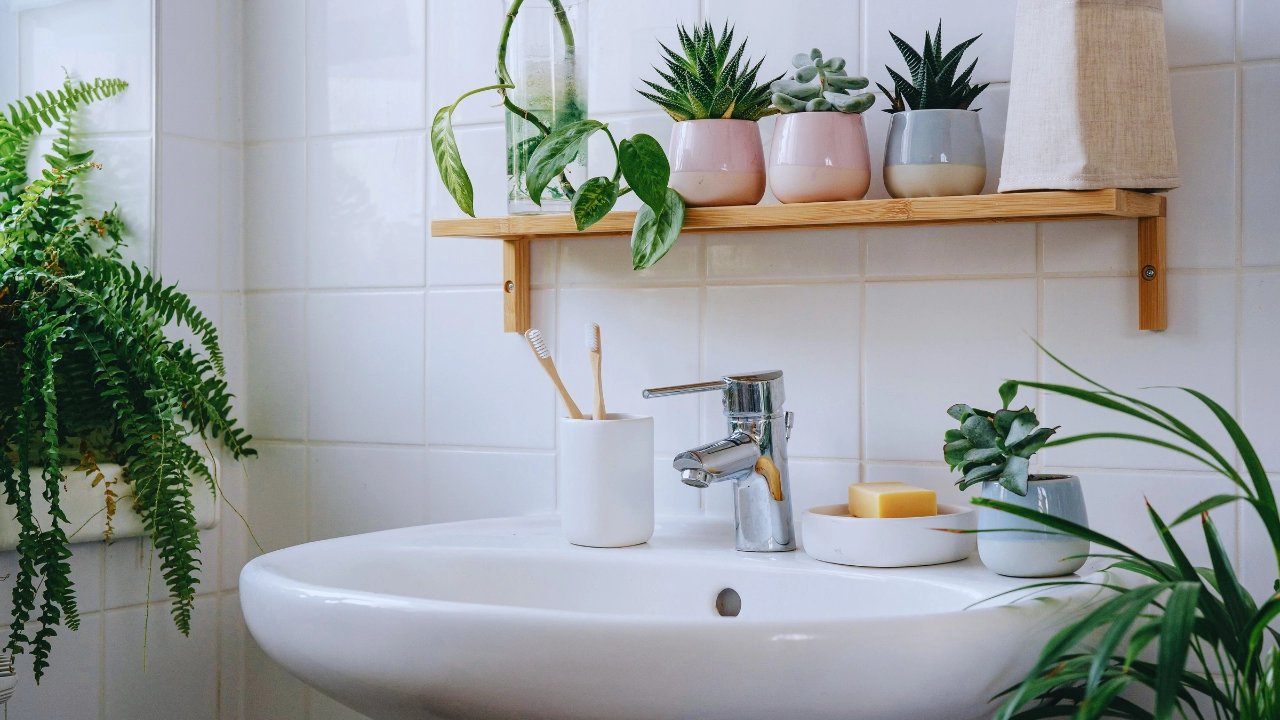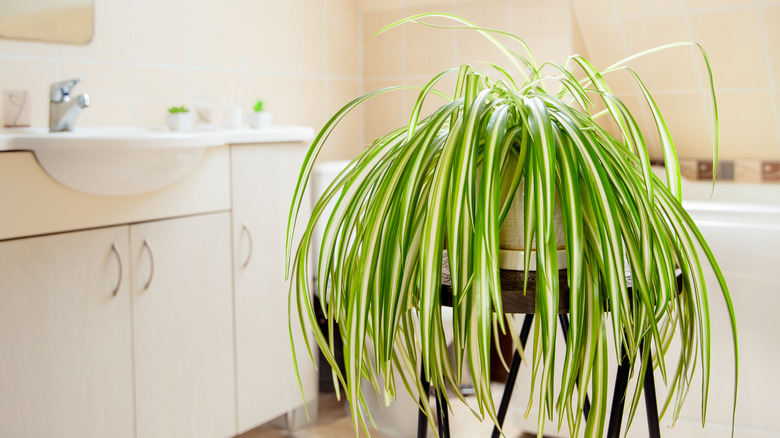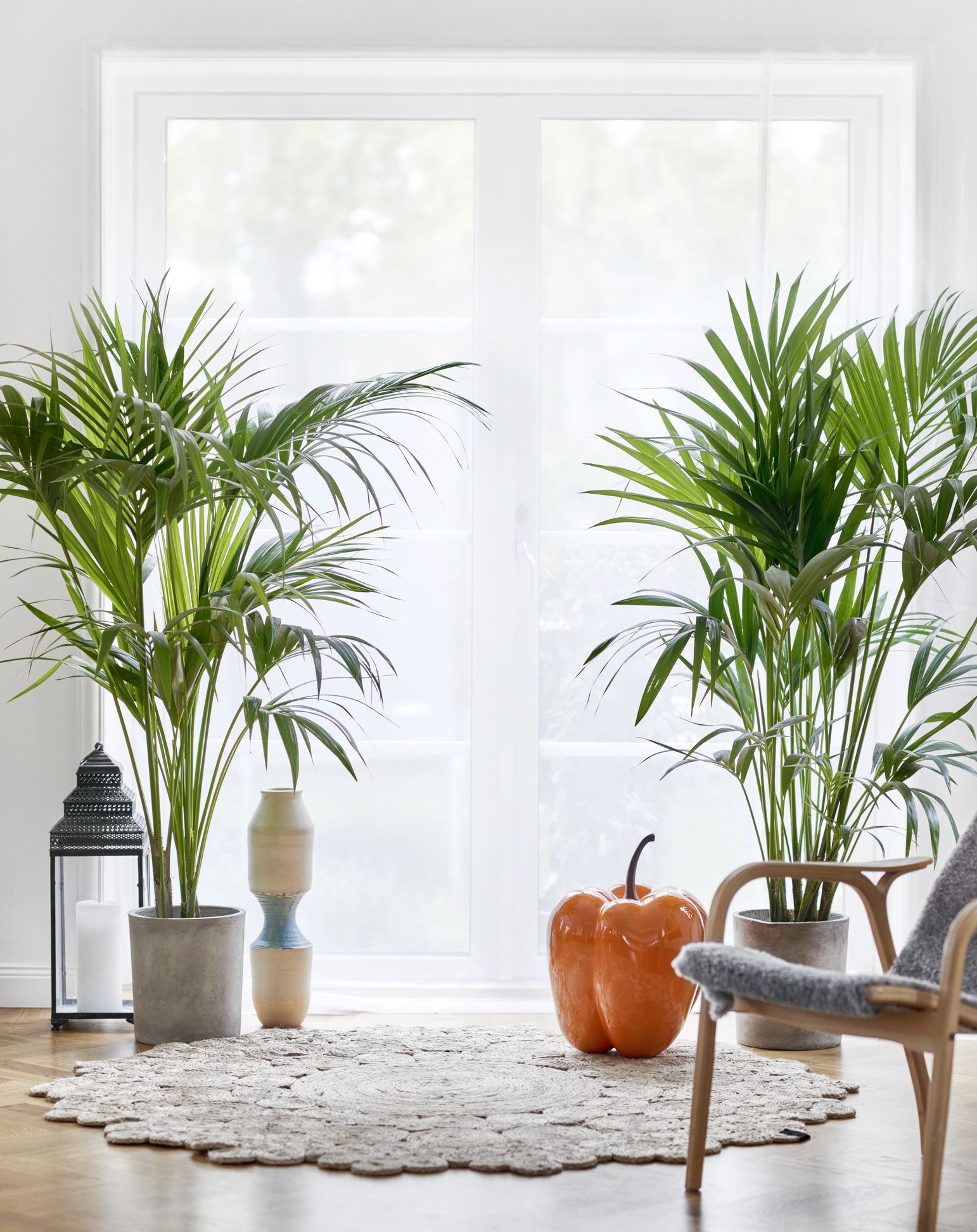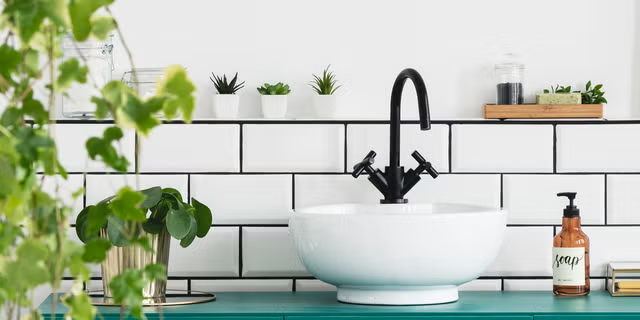Contents
Introduction
Are you looking to add a touch of nature to your bathroom but not sure where to start? Choosing the right plants for your bathroom can transform it into a fresh, calming oasis. Bathrooms, with their higher humidity levels, offer a unique environment that’s perfect for certain types of plants. But why does humidity matter so much, and how can you pick the best plants for this space?
Why Humidity Matters
Bathrooms are naturally humid places because of the steam from showers and baths. This high humidity can be a real boon for some plants but a challenge for others. Plants that thrive in high humidity can handle the moisture and even help to improve the air quality in your bathroom. Plus, they add a touch of greenery and life that makes your space more inviting.
Benefits of Bathroom Plants
Adding plants to your bathroom isn’t just about making it look pretty. Plants can actually help purify the air by removing toxins and adding oxygen. They also help maintain humidity levels, which can be beneficial for both your skin and the plant itself. And let’s be honest—there’s something incredibly relaxing about a bathroom that feels like a mini rainforest!
In this guide, we’ll dive into some of the best plants that flourish in high humidity, along with tips on how to care for them. Whether you have a small powder room or a spacious en-suite, you’ll find plant options that will make your bathroom a greener, more refreshing space. Ready to turn your bathroom into a lush retreat? Let’s get started!
Factors to Consider for Bathroom Plants
Choosing the right plants for your bathroom isn’t just about picking something that looks good. There are a few key factors to think about to ensure your green friends not only survive but thrive in this unique environment. Let’s break down what you need to consider:

Light Levels
Bathrooms can have varying levels of natural light, from bright windows to dim corners. Some plants love direct sunlight, while others are perfectly happy with low or indirect light. It’s important to figure out how much light your bathroom gets before choosing your plants. Don’t worry if your bathroom isn’t bathed in sunlight; many plants do well in lower light conditions.
Temperature Stability
Bathrooms can experience temperature swings, especially if you’re using hot water regularly. Most bathroom plants prefer stable temperatures and can be sensitive to drastic changes. Make sure to choose plants that can handle the temperature fluctuations typical of bathroom environments. Keeping the temperature consistent will help your plants stay healthy and happy.
Space Constraints
Bathrooms are often compact spaces, so you’ll need to think about how much room you have for your plants. Some plants grow tall and need a lot of space, while others are small and compact, perfect for tight spots. Consider your bathroom’s layout and choose plants that fit well without crowding the space.
Watering Needs
Humidity is a plus, but it doesn’t mean you can skip the watering. Different plants have different watering needs, and bathrooms can sometimes lead to overwatering if not monitored properly. You’ll want to pick plants that match your ability to maintain the right moisture levels. Some plants thrive on the extra moisture, while others might need a bit more attention.
By keeping these factors in mind, you’ll be better equipped to choose plants that not only look great but also do well in your bathroom’s specific conditions. Ready to dive into the world of bathroom-friendly plants? Let’s explore the best options for your space!
Top Bathroom Plants for High Humidity
Ready to discover the best plants for adding a touch of green to your bathroom? We’ve picked some fantastic options that thrive in high humidity and will bring life to your space. Whether you’re a plant novice or a seasoned green thumb, these plants are perfect for a bathroom setting. Let’s dive in!
Spider Plant (Chlorophytum comosum)
The Spider Plant is a real crowd-pleaser with its long, arching leaves and easy-going nature. It loves the humidity that your bathroom provides and does well in various light conditions. It’s also a champion at purifying the air, making it a practical choice for cleaner air. Plus, it’s super low-maintenance—just water it when the soil feels dry and give it some indirect light.

Boston Fern (Nephrolepis exaltata)
The Boston Fern is a lush, feathery beauty that thrives in high humidity, making it an excellent match for your bathroom. It loves a moist environment, so keep the soil consistently damp and provide it with bright, indirect light. This plant is a natural at filtering air pollutants, making your bathroom feel fresh and clean.
Peace Lily (Spathiphyllum spp.)
With its glossy green leaves and elegant white blooms, the Peace Lily is as beautiful as it is functional. It does well in low to medium light and enjoys the moisture in a bathroom environment. Peace Lilies are also known for their air-purifying properties, helping to keep your bathroom air clean and fresh. Just remember to keep the soil moist and avoid direct sunlight.
Pothos (Epipremnum aureum)
Pothos is a hardy, versatile plant that’s perfect for beginners. Its trailing vines and heart-shaped leaves can add a touch of green to any corner of your bathroom. Pothos thrives in the humid conditions of a bathroom and can tolerate a range of light levels, from low to bright indirect light. It’s also very forgiving if you occasionally forget to water it.
ZZ Plant (Zamioculcas zamiifolia)
The ZZ Plant is a low-maintenance option that can handle the occasional neglect. Its waxy, dark green leaves look striking and add a modern touch to your bathroom decor. While it can tolerate lower humidity, it still does well in a bathroom’s moist environment. It’s perfect for low to bright indirect light and requires infrequent watering—just let the soil dry out between waterings.
Bamboo Palm (Chamaedorea seifrizii)
The Bamboo Palm brings a tropical vibe to your bathroom with its feathery, arching fronds. It thrives in the humidity of a bathroom and prefers bright, indirect light. Not only does it enhance the room’s aesthetics, but it’s also great at filtering out indoor pollutants, making your space healthier.

Aloe Vera (Aloe barbadensis miller)
Aloe Vera is not just a pretty plant—it’s also a handy one. Known for its medicinal properties, it’s perfect for bathrooms where you might need a soothing remedy for minor burns or skin irritations. Aloe Vera prefers bright, indirect light and less frequent watering, making it a low-maintenance addition to your bathroom.
These plants are fantastic choices for a bathroom with high humidity, each bringing its own benefits and charm. By selecting any of these, you’ll be adding not just beauty but also a breath of fresh air to your space. Ready to green up your bathroom? Let’s make it happen!
How to Care for Bathroom Plants
So, you’ve picked out the perfect plants for your bathroom—awesome! Now, let’s talk about how to keep them healthy and thriving in their new home. Caring for bathroom plants is all about understanding their needs and making sure they get the right conditions to flourish. Here’s a simple guide to help you out:
Watering Practices
Watering is crucial, but it’s not always straightforward. Bathroom plants often need a bit more attention because of the high humidity. Start by checking the soil regularly; if the top inch feels dry, it’s time to water. Be careful not to overwater, though—too much moisture can lead to root rot. Make sure your pots have drainage holes to prevent water from pooling at the bottom. Some plants, like ferns, will need more frequent watering, while others, like the ZZ Plant, prefer to dry out a bit between waterings.
Humidity Management
Bathrooms usually have higher humidity levels, which is great for many plants, but sometimes you might need to boost it even further. If you notice that your plants are looking a bit droopy or their leaves are browning, it might be a sign they need more moisture. You can increase humidity by placing a small humidifier in the room or by placing your plant pots on a tray filled with water and pebbles. This helps to create a moisture-rich environment that your plants will love.
Fertilizing
Plants need a little extra nutrition to stay vibrant and healthy. Use a balanced, water-soluble fertilizer to give your plants the boost they need. For most bathroom plants, feeding every 4-6 weeks during the growing season (spring and summer) is usually sufficient. Avoid over-fertilizing, as this can harm your plants. Always follow the instructions on the fertilizer package for best results.
Pruning and Maintenance
Keeping your plants looking their best involves a bit of regular maintenance. Trim away any yellow or dead leaves to keep your plants healthy and prevent disease. For plants with long vines, like Pothos, you might want to trim them back occasionally to encourage fuller growth. Regularly clean the leaves with a damp cloth to remove dust and keep them looking shiny and fresh.
With these simple care tips, your bathroom plants will not only survive but thrive, adding beauty and freshness to your space. By paying attention to their watering needs, managing humidity, fertilizing properly, and doing a bit of pruning, you’ll ensure your plants stay happy and healthy. Ready to dive into plant care? Your lush bathroom oasis is just a few steps away!
Common Issues and Solutions
Even the best bathroom plants can face a few challenges. Knowing what to watch for and how to tackle common problems can help keep your plants looking their best. Let’s dive into some typical issues you might encounter and how to solve them.
Pests and Diseases
While bathroom plants are generally hardy, they can occasionally attract pests like spider mites, aphids, or gnats. Keep an eye out for tiny insects or webs on your plants. If you spot pests, treat them with insecticidal soap or neem oil. For fungal issues, such as mold or mildew, improve air circulation around your plants and avoid getting the leaves too wet. Regularly inspecting your plants and acting quickly at the first sign of trouble can help keep pests and diseases at bay.
Leaf Drop and Yellowing
If you notice that the leaves of your plants are turning yellow or dropping off, it could be due to several factors. Yellowing leaves can be a sign of overwatering or underwatering. Check the soil moisture and adjust your watering schedule accordingly. Another common cause is poor light conditions—make sure your plant is getting the right amount of light for its needs. If the problem persists, consider whether your plant might be experiencing temperature stress or nutrient deficiencies.
Root Rot
Root rot is a serious issue that can occur if plants are left in soggy soil for too long. Signs of root rot include yellowing leaves, a foul smell from the soil, and stunted growth. To prevent root rot, ensure your plant pots have good drainage and avoid overwatering. If you suspect root rot, remove the affected plant from its pot, trim away the rotten roots, and repot it in fresh, well-draining soil. Adjust your watering practices to avoid future problems.
By staying vigilant and addressing these common issues promptly, you can keep your bathroom plants in top shape and ensure they continue to thrive. Remember, a little proactive care goes a long way in maintaining a beautiful and healthy green space in your bathroom. Ready to troubleshoot? With these tips, you’re well-equipped to handle any plant challenges that come your way!
Tips for Enhancing Bathroom Plant Growth
Now that you’ve got your bathroom plants and know how to care for them, let’s talk about ways to make them truly shine. With a few simple tips, you can enhance your plants’ growth and create a lush, vibrant bathroom environment. Here’s how to get the most out of your green space:
Plant Placement
Where you place your plants can make a big difference in their growth. Choose spots that match each plant’s light needs—some thrive in bright, indirect light, while others do well in lower light conditions. Avoid placing plants too close to heat sources like radiators or vents, as this can cause stress. Also, consider the plant’s size and growth habits to ensure it has enough space to spread out without getting crowded.
Decorative Containers
The right container can not only complement your bathroom decor but also support your plant’s health. Opt for pots with good drainage to prevent waterlogging, and choose materials that fit your style, such as ceramic, terracotta, or even stylish hanging baskets. Adding a saucer under the pot can catch excess water and protect your surfaces. Make sure the container size is appropriate for the plant—too small and the plant might become root-bound, too large and it could hold excess moisture.
Combining Plants
Group plants together to create a stunning, mini indoor garden. Combining plants with different heights, textures, and colors can add visual interest and make your bathroom feel like a tropical retreat. Use plant stands, shelves, or hanging planters to arrange them at varying levels. This not only looks attractive but can also help improve air circulation around your plants. Just be mindful of each plant’s individual needs to ensure they all receive the right care.
With these tips, you can create a vibrant, healthy plant display that enhances your bathroom’s look and feel. By carefully placing your plants, choosing the right containers, and arranging them creatively, you’ll turn your bathroom into a lush, green haven. Ready to transform your space? Your beautifully thriving bathroom plants are just a few steps away!
Conclusion
So, you’re all set to bring some green into your bathroom and make it a fresh, inviting space! Let’s recap why adding plants is such a great idea and how you can make the most of your new leafy friends.
Recap of Benefits
Bringing plants into your bathroom isn’t just about making the space look prettier. Plants help purify the air by removing toxins and adding oxygen, which can make your bathroom feel fresher and more inviting. They also help maintain the right humidity levels, which can be beneficial for both you and your plants. Plus, there’s something soothing about being surrounded by greenery—it turns an ordinary bathroom into a mini oasis!
Final Recommendations
To get the best results, choose plants that thrive in high humidity and match your bathroom’s light conditions. From the low-maintenance Pothos to the elegant Peace Lily, there are plenty of options to suit different styles and needs. Make sure to consider factors like light levels, temperature stability, and space constraints when selecting your plants. With the right care, your bathroom can become a lush retreat with minimal effort.
Encouragement to Experiment
Don’t be afraid to experiment with different plants and arrangements. Each bathroom is unique, and finding the perfect plant combination might take a bit of trial and error. Pay attention to how your plants respond to their environment and adjust your care routine as needed. Over time, you’ll discover which plants work best for your space and how to keep them thriving.
By following these tips and staying attentive to your plants’ needs, you’ll create a beautiful and healthy bathroom environment. Enjoy the process of transforming your space and the benefits that come with having a bit of nature right where you need it. Happy planting!



